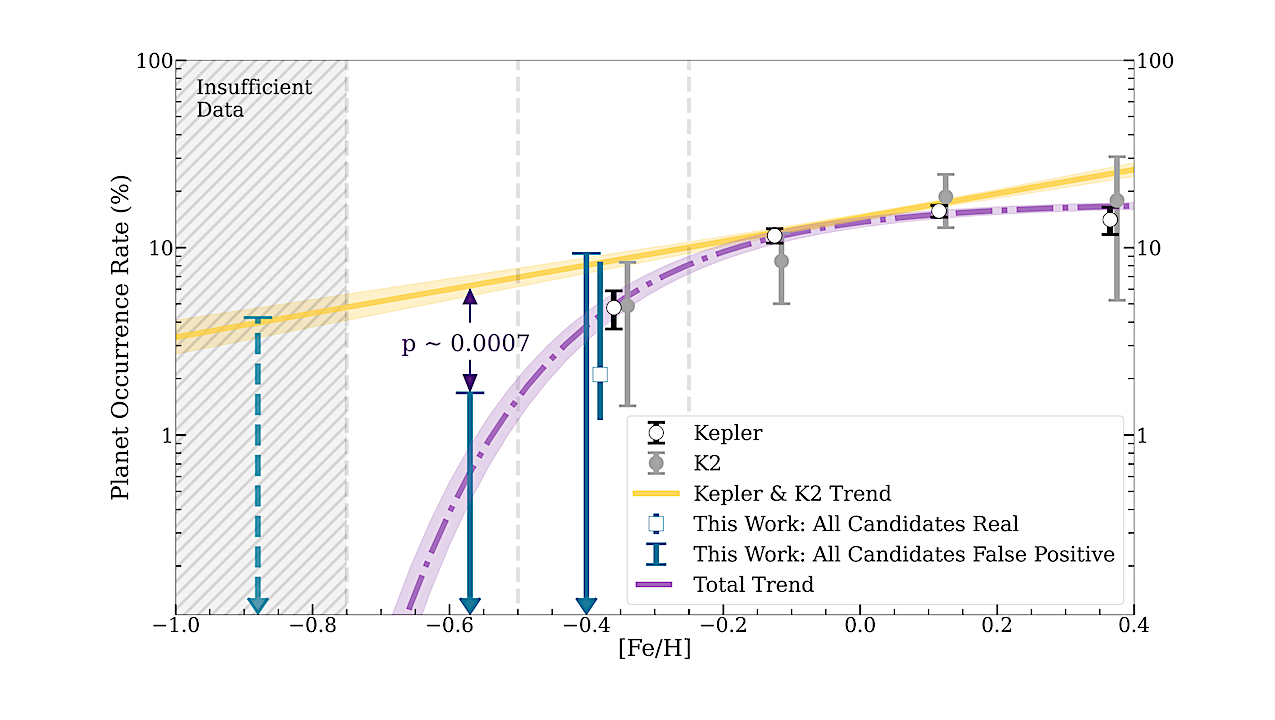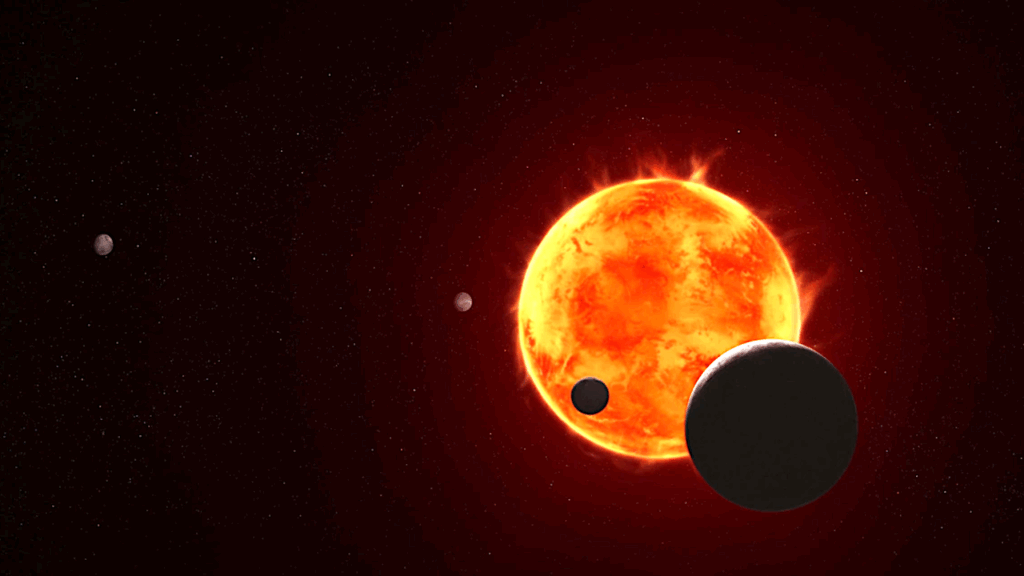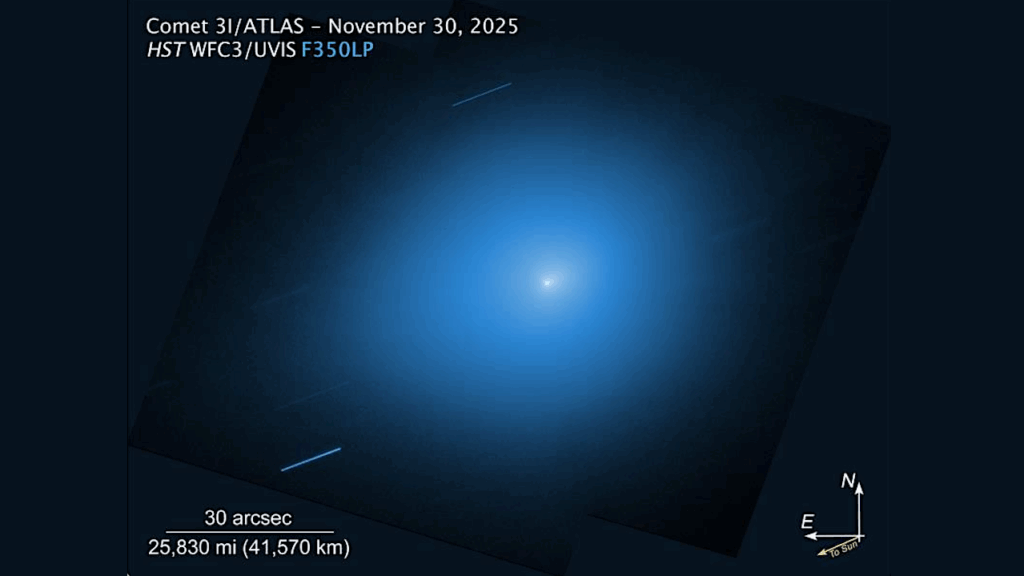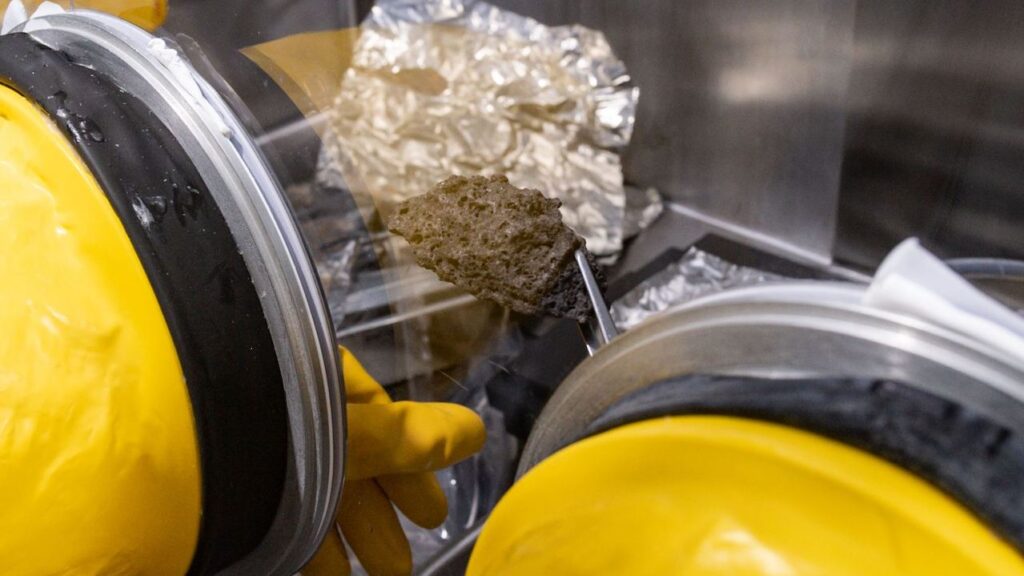The First Evidence of a Host Star Metallicity Cut-off In The Formation of Super-Earth Planets

Planet formation is expected to be severely limited in disks of low metallicity, owing to both the small solid mass reservoir and the low opacity accelerating the disk gas dissipation.
While previous studies have found a weak correlation between the occurrence rates of small planets (≤4R⊕) and stellar metallicity, so far no studies have probed below the metallicity limit beyond which planet formation is predicted to be suppressed.
Here, we constructed a large catalog of ~110,000 metal-poor stars observed by the TESS mission with spectroscopically-derived metallicities, and systematically probed planet formation within the metal-poor regime ([Fe/H] ≤ -0.5) for the first time. Extrapolating known higher-metallicity trends for small, short-period planets predicts the discovery of ~68 super Earths around these stars (~85,000 stars) after accounting for survey completeness; however, we detect none.
As a result, we have placed the most stringent upper limit on super-Earth occurrence rates around metal-poor stars (-0.75 < [Fe/H] ≤ -0.5) to date, ≤ 1.67%, a statistically significant (p-value=0.000685) deviation from the prediction of metallicity trends derived with Kepler and K2. We find a clear host star metallicity cliff for super-Earths that could indicate the threshold below which planets are unable to grow beyond an Earth-mass at short orbital periods.
This finding provides a crucial input to planet formation theories, and has implications for the small planet inventory of the Galaxy and the galactic epoch at which the formation of small planets started.
Kiersten M. Boley, Jessie L. Christiansen, Jon Zink, Kevin Hardegree-Ullman, Eve J. Lee, Philip F. Hopkins, Ji Wang, Rachel B. Fernandes, Galen J. Bergsten, Sakhee Bhure
Comments: Accepted to AJ
Subjects: Earth and Planetary Astrophysics (astro-ph.EP); Solar and Stellar Astrophysics (astro-ph.SR)
Cite as: arXiv:2407.13821 [astro-ph.EP] (or arXiv:2407.13821v1 [astro-ph.EP] for this version)
Submission history
From: Kiersten Boley
[v1] Thu, 18 Jul 2024 18:00:02 UTC (3,279 KB)
https://arxiv.org/abs/2407.13821
Astrobiology,








